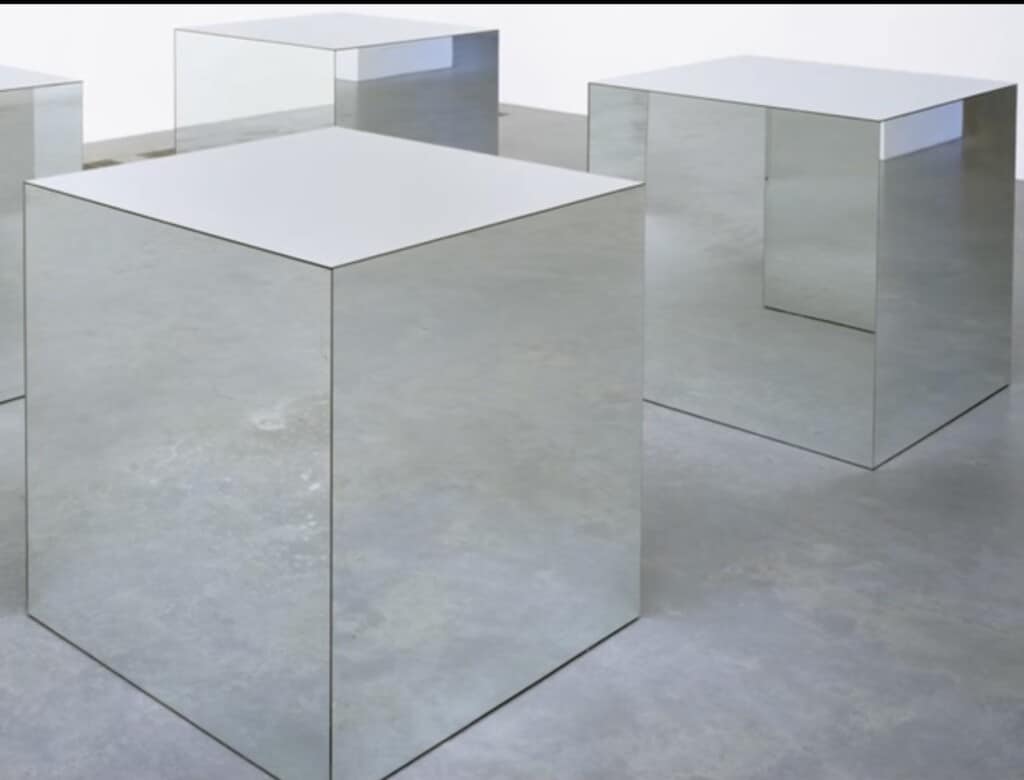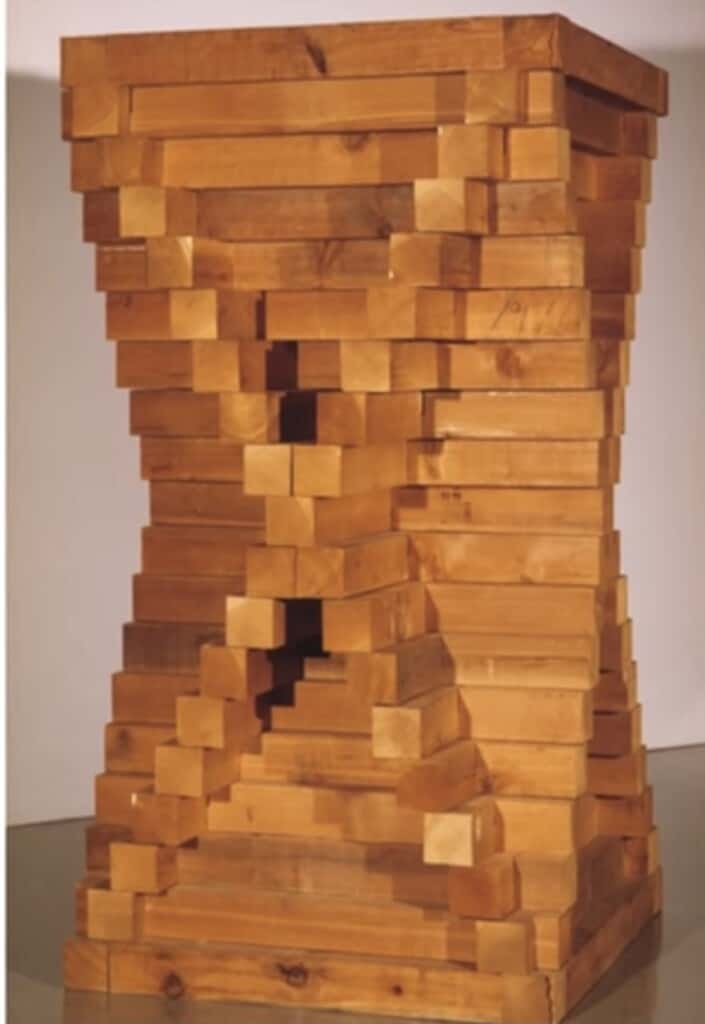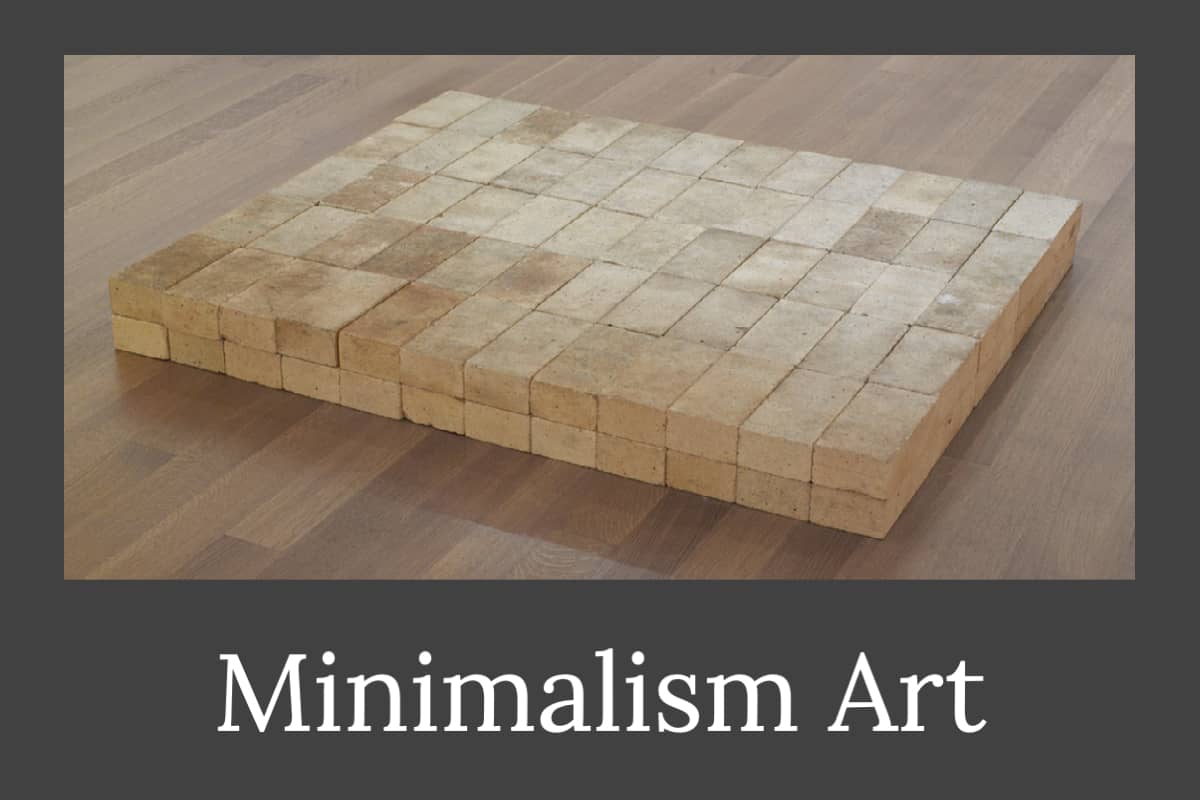The minimalist art movement is a unique art movement. I have always loved the ingenuity and yet the simplicity of minimalism art.
Minimalism art started in New York City in the 1960s. The minimalist artist would limit their use of lines, shapes, and colors in their art. The artwork had no trace of the artist’s emotions in the art. Minimalism art is considered an extreme form of abstract art. The most important geometric shapes in minimalism art are the square and rectangle.
Table of Contents
- Features of Minimalism Art
- Characteristics of Minimalism Art
- Where To See Some of the Best Minimalism Art?
- The Power of Less: 10 Reasons Why Minimalism is a Pivotal Art Movement
- Frequently Asked Questions
- Related Questions

Features of Minimalism Art
Minimalism art is an art movement that emerged in the mid-20th century. Minimalism art elements use minimal lines, shapes, and, often, colors. The Minimalism artwork may look and feel sparse, restricted, or empty.
Some essential features to understand about Minimalism art:
- Developed in the USA – Minimalism was developed in New York City in the 1960s.
- Different Names – The minimalism art movement is sometimes referred to as minimal art, ABC art, cool art, literalist art, object art, and primary structure art.
- Flourished in the 1960s and 1970s – The Minimalism art movement flourished in the 1960s and 1970s.
- Famous Artist of Minimalism – Some of the more famous minimalist artists include Carl Andre, Dan Flavin, Donald Judd, Sol LeWitt, Agnes Martin, and Robert Morris. These artists did not really ever consider themselves minimalist artists.
- Minimalism and Conceptual Art Link – Minimalism is linked to conceptual art. Conceptual art is an art movement that also flourished in the 1960s and 1970s
- Art Viewing – Minimalism challenged how art was viewed. The Minimalism artists argued that the art object’s importance is misplaced.
- Early Abstract Expressionism Influenced Minimalism Art – The early abstract movement was an important influence on the ideas and techniques that formed Minimalism art.
- Rejected Much Abstract Expressionism – Minimalism art rejected most of Abstract Expressionism art; minimalism wanted to obliterate expression from art.
- Suprematist Influenced – The Suprematist Russian art movement also influenced minimalist art. Some of these influences included the geometric forms of the Suprematist painter Kazimir Malevich (1878 – 1935) and his artwork as the Black Circle.
- Minimalism Art Was Criticized – The art critics of the day criticized the minimalist movement. For example, Michael Fried’s critical article “In Art and Objecthood” strongly criticized minimalist art and what he saw as the art “theatricality.”
Robert Morris, the Minimalism artist, said this about Minimalism art:
“No to transcendence and spiritual values, heroic scale, anguished decisions, historicizing narrative, valuable artifact, intelligent structure, interesting visual experience.”
Robert Morris
This is a very good video that talks about Minimalism Art
Characteristics of Minimalism Art
Most people usually recognize Minimalism art when they see it. This is because minimalist art has a minimalist or almost simplicity with art. But with all art movements, the minimalist art movement has some distinct characteristics.
Some characteristics of Minimalism art:
- Geometric forms – Minimalist paintings and sculptures use geometric forms.
- Square and Rectangle – The square and rectangle are the most important forms used in minimalism art.
- Precise and hard-edged – The minimalist forms for painting and sculpture are generally composed of precise and hard-edged forms; this is why the square and rectangle are so popular as they give this precise and hard-edged form.
- Limited color choices – Minimalism art usually uses a limited amount of colors. Minimalist artists may limit their color hues or use just one color.
- Expressionless Colors – Color, if used, is non-referential or expressionless colors. This means that if the artist uses a dark color, he cannot portray a somber mood. The color is not there to try to express an emotion or refer to anything.
- Non-object Art – The idea of minimalist art is not to show any external references or gestures.
- Truth in Art – One of minimalist art’s characteristics is truth in art; this means that minimalist art offers a highly purified form of beauty. It does not pretend to be something other than precisely what it is.
- Order, Simplicity, and Harmony – Some elements of Minimalism art are about order, simplicity, and harmony.
- Repetition – There is often some form of repetition in minimalist art. The repeating of the forms may highlight the subtle differences between each of the repetitions being used.
- Lack of Expression – A lot of minimalist art lacks expression; this means there is no trace of emotion or intuitive decision-making. The artist does not reveal their personality or emotions in the artwork. Minimalist artists do not see art as a unique creation that reflects the artist’s personal expression, but they see art as impersonal or neutral.
- Interest in Viewer Reaction- The Minimalism artist is interested in the relationship between the different parts of the artwork and how the artwork’s viewers see this relationship. In other words, two people could look at a piece of minimalist art, and both may see something different.
- Industrial, store-bought, or factory-manufactured materials. – Some of the minimalist artists, particularly those dealing with sculptures, may use everyday materials such as brick tiles and light bulbs for their sculptures.
- Some Did Not Consider Themselves Artists – Some of the minimalist artists did not really consider themselves artists. Carl Andre was known to say “I’m not a studio artist. I’m am a location artist.“

Where To See Some of the Best Minimalism Art?
Some of the essential collections of Minimalism Art can be viewed in these museums around the world:
- Tate Modern in London, England.
- Museum of Modern Art in New York City, New York
- Guggenheim Museum in New York City, New York
- Guggenheim Bilbao in Bilbao in Spain
- Modern Museum of Art of Fort Worth in Fort Worth, Texas
- Montclair Art Museum in New Jersey
- Museum Boijimans van Beuningen in Rotterdam, The Netherlands
- Chinati Foundation in Marfa, Texas
- Pinakothek der Moderne in Munich, Germany.
Minimalism art is an art movement that changed how art was viewed worldwide. Art is not just a shape or form but an artistic shape or form that allows the viewer to view the art. Not everyone will see and understand the same thing when they view art. This is one of the things that I really love about minimalism art.
The Power of Less: 10 Reasons Why Minimalism is a Pivotal Art Movement
At a glance, Minimalism might seem like a simple, even stark, form of artistic expression. However, a world of complexity, intention, and philosophical depth lies beneath its surface. Emerging in the 1960s, Minimalism radically shifted the landscape of art, challenging pre-existing norms and ushering in fresh perspectives.
Here are ten reasons why Minimalism stands as an important and influential art movement:
- Radical Simplicity: At its core, Minimalism is about distilling art down to its fundamental essence. Doing so challenges the viewer to engage deeply with the essential components, such as form, color, and material.
- Challenge to Expressionism: Minimalism emerged as a response to the emotional intensity of Abstract Expressionism. It stripped away the personal, emotional brushstrokes, opting instead for geometric clarity and impersonal execution.
- Interactivity and Perception: Minimalist art often plays with the viewer’s perception. By interacting with the art, viewers become aware of their spatial relationship to the piece and their environment, making them an integral part of the experience.
- Industrial Aesthetics: Many Minimalist artists employed industrial materials, blurring the lines between art, industry, and everyday life. This brought questions about art’s place in the modern world to the forefront.
- Philosophical Depth: Minimalism, in its reductionist approach, poses deep philosophical questions about the nature of art. What is essential for a piece to be considered “art”? Can simplicity convey depth?
- Focus on Objecthood: Minimalism brought forth the concept of ‘objecthood’, emphasizing the artwork’s physical presence. Art was about representation and the object existing in a specific space and time.
- Breaking Free from Commercialism: In a world increasingly dominated by commercialism and ornate art trends, Minimalism offered a purer, non-commercial aesthetic, often devoid of market-driven embellishments.
- Influence on Design: Beyond the realm of visual arts, Minimalism made a significant impact on design, architecture, and fashion. Many modern designs show its simplicity, functionality, and clarity principles.
- Empowerment of the Viewer: By presenting artworks that were open to interpretation, Minimalism empowered viewers to derive their own meanings, shifting the dynamic from passive observation to active engagement.
- Legacy and Continuation: While Minimalism as a formal movement had its peak in the mid-20th century, its influence persists. Contemporary artists continue to draw from its principles, and its ethos can be found in diverse art forms, from digital art to installations.
Minimalism is a testament to the adage “less is more.” By stripping art down to its bare essentials, it invited a deeper exploration of form, space, and meaning, proving that simplicity can indeed wield immense power and influence in the art world.
Anita Louise Art is dedicated to art education, great artists, and inspiring others to find and create their art. We love art that uplifts and inspires. #ArtToMakeYouSmile! #ArtToMakeYouHappy!
If you want to see any of my art, you can find out more by clicking here. If you are interested in what inspires me and my paintings, you can discover more by clicking here.
We have a free newsletter and would love you to be part of our community; you can subscribe to the newsletter by clicking here. If you have any questions, I would be happy to talk to you. You can reach me, Anita, by clicking here.
Subscribe to our Anita Louise Art YouTube Channel, filled with great videos and information by clicking here.
Join us for our podcast “5 Minutes With Art.” Spend just 5 minutes a week with us to discover and learn about great art and artists. You can find out more about our podcast by clicking here.
Frequently Asked Questions
What is Minimalism art?
Minimalism art is an art movement that emerged in the 1960s in New York City, characterized by the use of simple geometric shapes, limited color palettes, and a focus on the essential elements of form.
How did Minimalism art originate?
Minimalism art originated in New York City during the 1960s as a response to the complexity and emotional expression of abstract expressionism. Artists sought to create works that were stripped down to their essential elements.
What sets Minimalism art apart from other art movements?
Minimalism distinguishes itself by the intentional use of a minimal number of elements, such as lines, shapes, and colors. It rejects unnecessary embellishments and focuses on simplicity.
How do Minimalist artists approach emotions in their art?
Minimalist art typically lacks overt emotional expression. Artists intentionally avoid conveying personal emotions or narratives in their work, aiming for a more objective and neutral aesthetic.
Is Minimalism art a form of abstract art?
Yes, Minimalism art is considered an extreme form of abstract art. It emphasizes non-representational and geometric elements, moving away from traditional representational styles.
What are the primary geometric shapes used in Minimalism art?
The most important geometric shapes in Minimalism art are the square and rectangle. Artists use these shapes to create a sense of balance, simplicity, and order in their compositions.
How does Minimalism art relate to the concept of simplicity?
Minimalism art is closely associated with simplicity. Artists intentionally limit the number of elements in their compositions, avoiding unnecessary details and complexity to achieve a clean and straightforward visual impact.
What role does color play in Minimalism art?
Minimalist artists often use a limited color palette, with a focus on neutral tones such as white, black, and various shades of gray. This deliberate choice emphasizes form and shape over color complexity.
How does Minimalism art challenge traditional notions of art?
Minimalism challenges traditional artistic conventions by emphasizing the importance of simplicity, objectivity, and the reduction of elements. It encourages viewers to appreciate the essence of form without the distractions of elaborate details.
What is the significance of repetition in Minimalism art?
Repetition is a common technique in Minimalism art, where artists use repeated geometric shapes or patterns to create a sense of rhythm and order. This repetition reinforces the minimalist philosophy of simplicity and uniformity in artistic expression.
Related Questions
What Are The Characteristics Of The Arts And Crafts Movement?
The Arts and Crafts movement started in Britain and then swept over Europe and the United States. The movement started to become both popular and very influential in the late 19th century and changed how many artists around the world viewed their art. It also changed how artists saw the design of not just their artwork but also buildings, fabrics, wallpaper, parks, cities, and objects in their homes and offices.
You can learn more by reading What Are The Characteristics Of The Arts And Crafts Movement? by clicking here.
Who Was The Swedish Artist and Illustrator Carl Larsson?
Carl Larsson was born into dire poverty but raised himself out of poverty through his artwork. He married Karin Bergöö, a fellow artist. Together they had eight children. Many of his most famous paintings come from the many family scenes he painted of his wife and children in their home in Sundborn, Sweden. Carl and his wife Karin influenced Swedish art and design through his paintings and their home design. Today, you can visit their house and garden in Sundborn. Sweden.
You can find out more about Carol Larsson by reading 22 Facts About Carl Larsson, The Swedish Artist, and Illustrator by clicking here.


